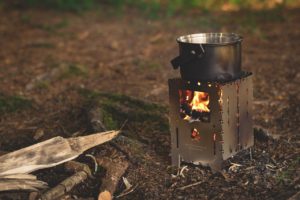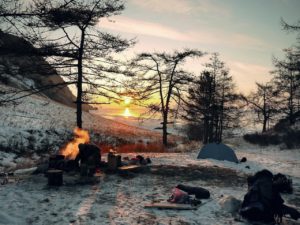Hiking Food That Will Keep You Energized
 Do you have a camping or hiking trip coming up? Planning out your hiking food is important, and there’s more to it than just grabbing a few granola bars and water. Follow these food tips for hiking meal planning to ensure you have safe and nourishing food that will keep you energized during your outdoor adventure.
Do you have a camping or hiking trip coming up? Planning out your hiking food is important, and there’s more to it than just grabbing a few granola bars and water. Follow these food tips for hiking meal planning to ensure you have safe and nourishing food that will keep you energized during your outdoor adventure.
Essential Foods to Take on a Hike
Your water and food intake will need to be higher than normal because of all the energy you’ll be burning on a hike. Make sure you pack plenty of fluids for warmer weather. Some of the key considerations before you shop include: the length of the trip, what type of food related tools you’ll need, and is bringing a cooler an option?
You can actually pack perishable foods, such as sandwiches, just make sure you include an ice pack to keep the food chilled properly. The more food you store in your pack, the harder your hike will be, so choose mainly non-perishable foods that are nutrient dense and relatively lightweight including:
• Granola bars and granola
• Nut-based bars or packs of nut butters
• Freeze-dried or dried veggies and fruits
• Energy gels or bars
• Whole-grain tortillas
• Meat or poultry jerky
• Tuna salad pouches
It can be much more challenging to pack enough food to last for days or weeks. The first day of your trip you’ll be able to finish off all the perishable food, but after day one you’ll have to map out the meals so that you’ll have food that will last the entire trip. If you’re bringing along a cooler, then you’ll still have several options. Otherwise, you’ll want to include some of these basics to sustain you:
• Cereal
• Veggie or fruit puree
• Canned fish
• Whole grain pasta
• Instant rice
• Bottled water
• Marshmallows
• Hot cereal
• Condiments
• Pancake mix
Make sure you and everyone in your party follows good food safety practices. Keep in mind that any perishable food shouldn’t be kept out in hot weather for more than an hour or two. Food safety essentials include:
• Cooking pot or kettle
• Plates and bowls
• Cooking and eating utensils
• Paper towels
• Disposable wipes
• Can opener
• Trash bags
• Water filter
• Thermometer for cooked meat and cooler
Meal Planning for a Camping Adventure
Aside from preparing your hiking gear, planning the food for your next hike is also important. Your hiking food should provide you with high levels of nutrition, be as lightweight as possible, and require minimal preparation. You can easily accomplish this by getting organized and plan the meals you’ll create for your trip. This can ensure that you bring all the supplies and ingredients, and tools needed for each meal.
For breakfast, oatmeal packets are a perfect choice and a hiking food staple. The best thing about oatmeal packets is that they can also serve as disposable bowls. Simply add water in order to heat the oats.
Grits are just as easy to make as oatmeal and will definitely make a nice addition to your meal plan.
Most hikers avoid taking fresh fruit because it’s too delicate and heavy. Bringing along dried fruit provides you with dense sugar, which is definitely a better option than candy.
A good supply of seeds and nuts is a must. Nuts are also a great way to pack in oils, healthy fats, protein, and calories. There are a number of varieties of both nuts and seeds available and they can be used alone or to flavor a meal.
Dark chocolate contains sugar and antioxidants, and it can be just what you’re craving after a long day of hiking or climbing.
There are several powder meal options available, such as whey protein powders, which can be mixed with water or a can of coconut milk. You can use it as a snack or a meal replacement option and a small amount of powder goes a long way.
For lunch, you’ll probably be ready for a heartier meal. Tuna, salami, and beef jerky are great non-cook meats to use on the trail. All of these options are high in sodium and protein and don’t require refrigeration. They’re also perfect for a quick lunch.
Cheese can provide a lot of fat and calories and it can also really enhance meat flavor. Choose the harder cheeses, which are more shelf stable.
When you want to pack light, bread can be too bulky. Try whole grain tortillas instead. They’re compact and can definitely take a beating. Add some tuna and hard cheese with a handful of almonds and you have a complete meal that’s ready in minutes.
If tortillas aren’t your thing, bring along some bagels. They’re a lot less delicate and a more packable option than regular bread and can satisfy any carb cravings you may have.
Crackers are high in sodium and carbs and make the perfect addition to any meal or snack.
Camping Dinner Ideas
 Got a pasta craving? Seasoned noodles don’t require much cleanup compared to boxed creamy pasta. They’re also high in carbs and will take up very little weight in your pack.
Got a pasta craving? Seasoned noodles don’t require much cleanup compared to boxed creamy pasta. They’re also high in carbs and will take up very little weight in your pack.
Instant rice makes a great base for any dinner out in the backcountry. There are several rice varieties with different veggies and seasoning options available.
Couscous only takes about five minutes to cook, which is a lot faster than noodles or rice. It’s also high in fiber, but a little less filling.
Who doesn’t love mash potatoes? Instant potatoes pack light and take about ten minutes to prepare. They’re also a great source of starch and carbs, just add a little oil or meat for more flavor.
When you’re out on the trail, eating healthy can be difficult. However, dried veggies are the exception. These veggies can be added to any of the dishes we have listed here and make a welcome healthy addition.
One of the best hiking food are lentils. For some, lentils are an acquired taste, but when you’ve been hiking for several hours in the cold, their steamy, nutty taste will hit the spot. Lentils can be eaten alone or added to a rice dish or even oatmeal. They’re also packed with iron, protein, and fiber.
